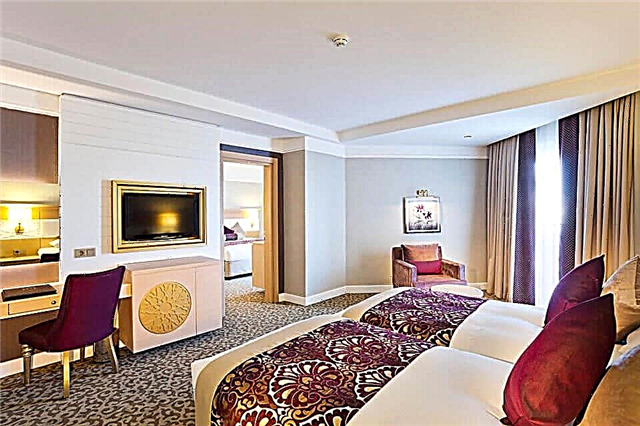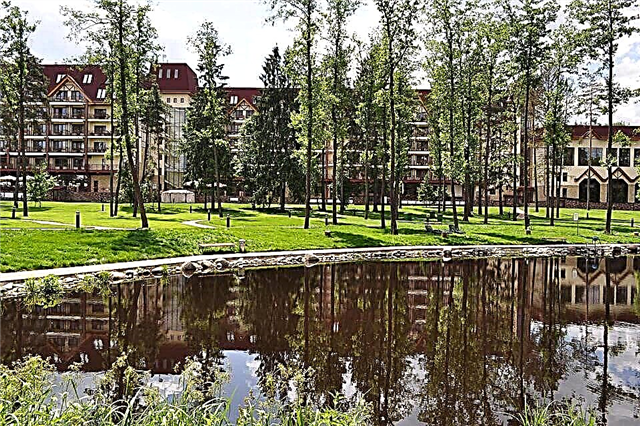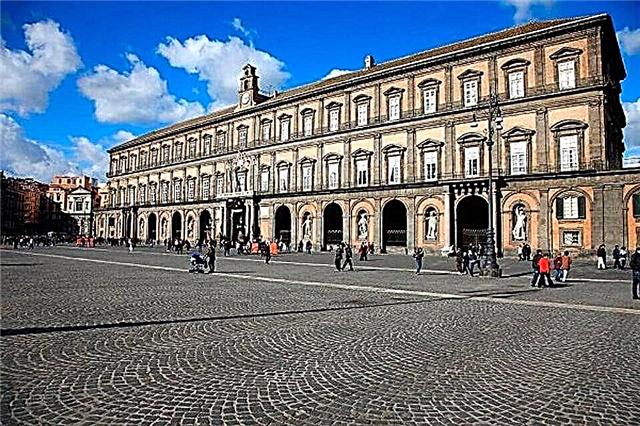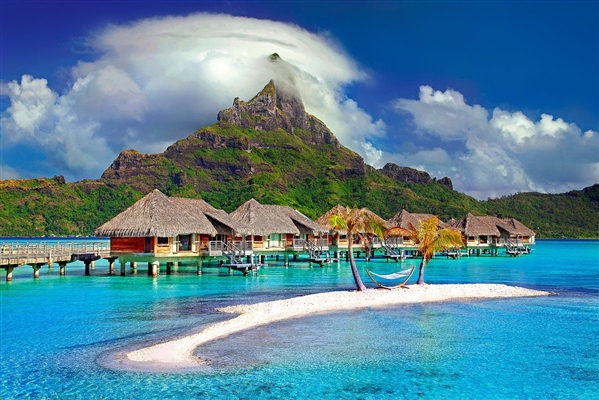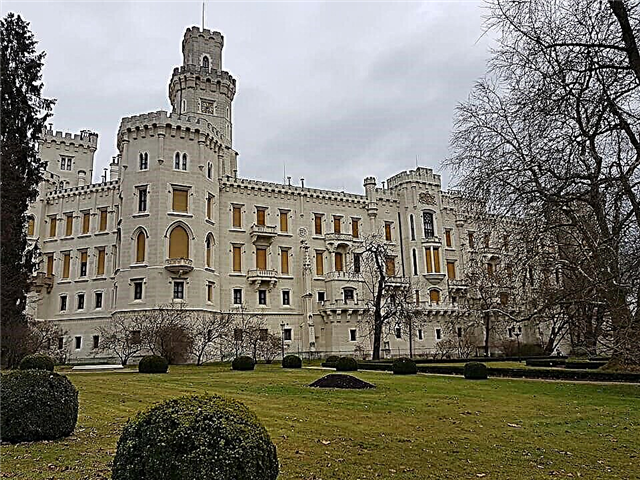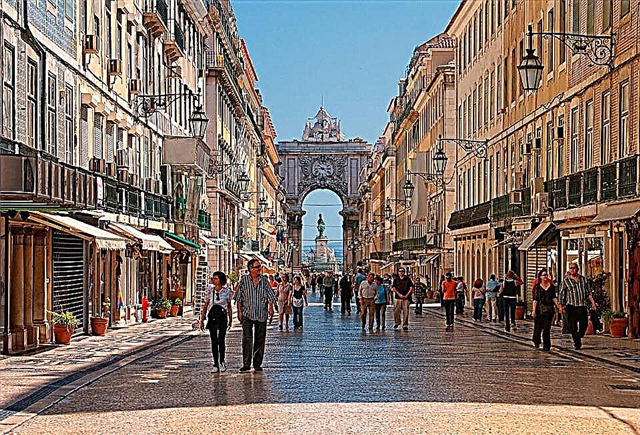Lisbon is one of the most remote capitals of Europe from our country, free from prejudices, which gave the world the great Vasco da Gama and Fernand Magellan. For those who are planning to visit this beautiful city in the near future, we recommend that you read our overview of the most popular attractions in Lisbon. An exciting but long walk awaits you, because there are so many unique and interesting places that you want to see everything at once.
Aqueduct Aguash Librish

The capital of Portugal is one of the most homogeneous European cities from an architectural point of view. This is due to the fact that almost all the sights were restored at the end of the 18th century, after the city survived a strong earthquake. Today they form a single ensemble, which cannot be imagined without the Aguas Librish aqueduct.
With its help, one of the most important urban problems was solved - local residents from time immemorial suffered from a lack of drinking water. By the way, despite the fact that a lot of water has flowed under the bridge since the commissioning of Aguash Librish to this day, literally and figuratively, it still contributes to the city's water supply system.
The aqueduct was built using the latest achievements of scientific and technological progress of that time. Its length is more than a dozen kilometers, but tourists are only interested in one section, which runs along the Alcantara valley. It is on this territory that the legendary 30 arches are located, which today have become the architectural heritage of Portugal.
For a long time, the aqueduct could only be viewed from afar - its significance is too great and tourists were not allowed to visit the wall itself. However, nowadays it is possible to walk along it again. Interest in the structure is also great due to the fact that it was miraculously preserved after the 1755 earthquake.
Queluz Palace

For many years, Portuguese monarchs lived within its walls. Today, the luxurious residence is old in the public domain. Built in the 18th century, the Queluz Palace has long been the summer residence of the Portuguese kings. They not only rested here, but also had fun, as they say, to the fullest - the legends about Kelush receptions and balls at one time excited the whole of Europe.
Today everyone can enjoy the former splendor - almost all the halls, perfectly preserved to this day, are available for inspection. Even the fire that the palace had to endure did not affect its splendor - the restorers carefully and reverently restored every detail of the external and internal decoration.
Portuguese kings not only loved luxury, but also appreciated art. In almost every hall of the palace, in addition to the interiors, you can see paintings by famous and not so famous artists, as well as numerous statues.
In addition to the palace, a beautiful park deserves attention. To this day, as well as many years ago, all the shrubs here are carefully cut and the flower beds are fragrant. Fountains and fountains complete the picture. At the end of the walk, you can sit in one of the gazebos or, if you're lucky, attend a concert of live instrumental music.
Mafra Palace

The construction was conceived on a grand scale and to this day the complex is striking in its scale. The palace was built in the 18th century, and not just like that, but on occasion. In the royal family, João V and his beloved wife Anna of Austria, after several years of waiting, finally had their first child! Naturally, this event was celebrated on a large scale. To this day, Mafra remains one of the largest and most luxurious palaces not only in Portugal, but throughout Europe.
In total, it consists of 1200 halls and rooms, which in terms of area can be compared with ten full-fledged football fields. In addition to the usual premises, the complex includes a small monastery, a basilica, two romantic towers with bell towers on the tops, and a library. The fund of the latter amazes even seasoned art critics, let alone ordinary tourists. If you are lucky, during the excursion you can not only learn about the palace, but also hear the legendary ringing, which is emitted by more than a hundred bells sounding simultaneously.
Mafra Palace is located in the suburb of the same name. Getting to it is problematic - public transport does not go to this place. You will have to rent a car or, much easier, join an organized group. Trips are offered by almost all travel agencies. The palace is closed on Tuesdays and on public holidays. The rest of the time it works from 9-00 to 18-00.
National Museum of Ancient Art

It's hard to say when the history of the museum began. However, for a long time it was a small exhibition organized at the monastery of St. Francis. However, over time, there were so many exhibits that it was decided to build a separate building for them. The grand opening took place in the 90s of the XX century.
Today the collection includes paintings, antique furniture, sculptures and even luxurious jewelry. All this is conditionally divided into three groups, for each of which a separate floor is allocated. The first includes works by European masters. Here you can find paintings by famous artists, such as Raphael, and much less popular ones. The second part of the museum's exposition is the medieval art of Asia and Africa.
Portuguese sailors were interested not only in goods, but also in painting, and often brought canvases with them. Today, most of them are collected in the National Museum of Ancient Art. And finally, the third part of the museum is dedicated exclusively to the work of the Portuguese. It is she who arouses the greatest interest among those who came to get acquainted with the customs, traditions and culture of the country.
Located on Rua Janelas Verdes Street. Buses 713, 714 or 727 follow to the stop with the same name.
Archaeological Museum in the Monastery of Karmu

Reminds of the distant times of Byron, medieval battles, valiant knights, dizzying victories and devastating defeats. Today, many interesting things are located within its walls: a church, residential buildings, the Santa Justa elevator and, of course, an archaeological museum. The history of the archaeological museum began in 1864. It was then that a group of enthusiastic archaeologists organized a small exhibition at the now defunct Corfu monastery, consisting of exhibits found in the area. Gradually, archaeological finds from all over the country began to "flock" here.
Today it occupies the underground premises of the monastery. The setting itself is set to plunge into distant eras and travel back in time. As for the exhibits, there are plenty of them here. The pearl of the collection is considered to be richly decorated sarcophagi, including the Egyptian one. However, much more guests are amazed by the real mummies brought from Peru.
Against their background, the exposition dedicated to the history of architecture does not look so impressive. However, those who are at least a little versed in this matter, or simply consider themselves an amateur, have a completely different opinion of her. After all, fountains from different eras, the magnificent Azulejo tiles and other decorative elements presented in the museum are quite rare in real architecture.
Guests who consider history boring and archeology something uninteresting should definitely overcome their prejudice and look into the underground halls.
Basilica de Estrela

The Basilica de Estrela, standing on a hill, can be seen from almost anywhere in the city. The basilica resembles the Mafra palace in its appearance.The same style of late baroque with elements of classicism, just beginning to come into its own. The same ornate details. And, of course, both of these buildings look not just great - they look luxurious. But it turns out that they are united not only by their appearance.
The basilica, like the palace, was built for a reason, but on the occasion of the birth of the long-awaited heir. In 1761, the son of Jose was born to Mary I of Portugal. However, it did not work immediately to start work and did it only in 1779. Unfortunately, the prince himself did not live to see their completion in 1790 - he died two years earlier. That is why the grand opening of the basilica did not work, and Queen Mary later turned this place into her tomb.
Today it is worth entering the temple at least to look at the numerous sculptures that adorn it. The most famous are in the Christmas group, which consists of 500 small figures. There is also a good collection of paintings by the Italian Pompeo Batoni. At the top of the basilica there is an observation deck, which can rightfully be called one of the most spectacular.
You can get there by tram number 28, which is always popular among tourists, and get off at the stop of the same name.
Belem Tower

Belém Tower is considered one of the seven wonders of Portugal. Its appearance reminds of the distant times of merchant-seafarers and discoverers of distant lands. What can we say about history, which reflected more than one period of the country's development. Like many years ago, the Belém Tower serves as an excellent landmark for ships, and the Virgin Mary of Happy Returns, whose sculpture is installed here, rejoices for those who have returned to the mainland and patronizes those who are still far from her.
Once the tower was not only a symbol of successful navigation, but also a defensive bastion. Today, 16 powerful guns installed in casemates remind of this. But much more tourists are attracted by the second floor, where the legendary statue of the patroness of sailors is installed, and there is also a small balcony, from where, many years ago, the royal family welcomed ships sailing from afar. At the top of the tower there is an observation deck, from which a mesmerizing panorama of the Tagus River opens, as well as a view of the city itself.
A huge number of styles were mixed in the architecture of this building, as a result of which it turned out not a traditional imposing, but a light and soaring, but still a fortress. On the walls there are a lot of decorations related to the marine theme. You can get there by tram No. 15 or buses No. 714, 727.
Lisbon City Museum

During a several hour excursion or just a walk through the halls, guests have a chance to look into a variety of eras, as well as get acquainted with certain areas of art. The history of the museum began several centuries ago. Every year it expanded, the collection grew, and today it is already capable of impressing even seasoned travelers. For the convenience of guests, all exhibits are very clearly divided into groups, each of which is dedicated to a particular time or sphere.
The collection of geographical maps of the 17-20th centuries is of the greatest interest. The Portuguese have always been leaders in the field of navigation and exploration of new lands, and here the history of discoveries can be traced in the best way possible. And who knows, maybe there are still corners on planet Earth that have yet to be mapped? Another hall worth paying attention to is dedicated to the azulej tiles. For more than one hundred years, it has been produced in only two countries: Spain and Portugal, so the craft can really be considered unique. The collection features unusual and best samples made at different times.
And finally, a small but very interesting part - the unique House with Peaks, Casa dos Bicos. An unusual masterpiece by local architects. You can get there by metro. To do this, you need to get off at the Campo Grande station.
St. George Castle

Many call it nothing but the Kremlin. The majestic and formidable fortress, which is visible from almost any part of the city, appeared on the banks of the Tuju River in the distant 12th century. Since then, she has been a witness to all the historical events associated with Lisbon, a participant in wars and coups. True, in our days, no one threatens Portugal for a long time and the defensive structure has turned into a museum.
So, what awaits the guests behind the massive and impregnable walls. First of all, there is a cozy courtyard in which peacocks stroll slowly. In the center of it there is a picturesque restaurant. Although this was not always the case - once it was here that there was a royal residence, which has not survived to this day. Right there, in the courtyard, you can get acquainted with a variety of medieval weapons. In the basement of the fortress there is a small but very interesting archaeological museum. It is worth a visit if only for the sake of learning more about the old, medieval Lisbon.
And, of course, a visit to the Castle of St. George cannot be imagined without a walk along the fortress walls. When else will the Portuguese capital be right at your feet? Finding the Castle of St. George is not difficult - it is visible from any point.
Zoo

This is a place where you can take a break from architectural masterpieces and escape from the bustle of the city. In addition, acquaintance with the world of animals is a must for those traveling with children. It differs from most other urban zoos in that its inhabitants do not live in cages, but in conditions as close as possible to natural ones.
Lions and tigers rest on the grass that resembles the savannah, monkeys climb trees, and the rhino is the luckiest one - his house resembles an African village. To make it convenient for guests to observe the animals, benches and tables are installed throughout the zoo. Here you can not only take a break, enjoy nature, but also have a small picnic.
At a specially set time, employees come to the enclosures with animals and invite everyone who wants not only to look at a variety of animals, but also to feed them. Children are delighted with this opportunity. Naturally, all this is done in compliance with safety rules and does not apply to predators.
Those for whom the show with feeding is not enough can drop in at a dolphin performance, visit the reptile kingdom or tickle their nerves by walking along the cable car.
You can get there by buses No. 16, 31, 70, 96, as well as by fixed-route taxis. You need to get off at the Jardim Zoologico stop. In summer it is open from 10-00 to 20-00, in winter until 18-00. It is better to check the dolphin show schedule before your visit on the official website or in the current advertising brochures.
Cathedral

It is one of the most significant architectural symbols of the capital of Portugal. The temple was erected on the foundations of a destroyed mosque in the 12th century. The shrine looks like an impregnable fortress with powerful walls. This is the only building in the city that survived after the strongest earthquake in 1755. The exterior and interior of the religious building reflect the Gothic, Baroque and Romanesque styles of architecture.
The austere building of the cathedral in the plan is made in the form of a Latin cross with three naves. The facade of the shrine is devoid of sophisticated and pompous decorative elements. Two wide crenellated bell towers with arched windows and loopholes, as well as a large central rose window, draw attention. The interior decoration attracts the attention of the exquisitely designed vaulted ceiling and the abundance of sculptural images of saints. The temple is open for visiting from 9:00 to 19:00. Free admission.
Santa Justa Elevator

One of the central streets is dominated by an astonishingly beautiful steel structure, decorated with filigree patterns of metallic lace. This is the famous tower with two lifts - Santa Justa.The engineering structure was designed and built at the beginning of the 20th century. Its height is 45 meters. For 5 euros, wood-polished elevators with mirrors take tourists to the observation deck, from where an amazing panorama opens. The ascent to the observation platform is from 7:00 to 21:45. The elevator cabins can accommodate up to 20 people.
Praça do Commercio shopping area

On the embankment of the majestic river of the Iberian Peninsula Tagus is the Commerce Square or Praça do Comercio. Until 1755, when Portugal was shaken by the strongest earthquake, there was a magnificent royal palace on the square. As a result of the raging elements, the structure was literally washed away by a giant wave. After the restoration of the city, the square was surrounded on three sides by a new architectural ensemble, consisting of buildings of the same type with colorful facades and arcade galleries on the first tiers.
The buildings housed chambers of commerce and government services. The central composition of the Praça do Comercio square is a bronze equestrian statue of King José I, installed on a high pedestal. The square is open to visitors around the clock. Free admission.
Rossio square

In the center of the capital of Portugal is the distinctive and vibrant Rossio square. This is one of the must-see places that will provide tourists with an unforgettable pleasant experience. From time immemorial, active life boils here around the clock. Since the Middle Ages, bullfights and festivals have been held on the square. Today it is the busiest part of the city that attracts with its originality.
The rectangular space of the street is paved with picturesque mosaics.
White and black paving stones are lined with wavy ornaments, which can make impressionable people feel a little dizzy. The square is flanked by historic buildings, among which the monumental National Theater with a massive six-column portico stands out. Two fountains with sculptural compositions, a column with a statue of King Pedro IV and numerous cafes give the square a special charm.
Alfama District

A walk through the oldest quarter of Alfama promises tourists the opportunity to get acquainted with the distinctive way of life of the Portuguese. On the hilly slope are favelas with labyrinths of cobbled narrow winding streets, ornate alleys and stairways. This is the only area that survived the devastating earthquake in 1755.
Chaotically lined and densely standing buildings immerse the visitors of the ancient district in the era of the past centuries. Here you can see many dilapidated centuries-old buildings, as well as quaint houses, the facades of which are decorated with magnificent tiled tiles. Laundry hung on strings across the streets, melodic Portuguese romances, cozy restaurants and hospitable locals create a colorful atmosphere.
Statue of christ

The statue of Christ deserves the attention of the guests. The grandiose monument is a small copy of the world famous Brazilian sculpture. The statue symbolizes gratitude to the Savior for protecting Portugal from participating in World War II. The opening of the Statue of Christ took place in 1959. A sculpture with open arms rises on the opposite left bank of the Tagus River in the suburbs. The total height of this breathtaking large-scale structure is 110 meters. The monument is installed on a pedestal with an elevator inside.
Tourists can climb to the foot of the statue of Jesus for scenic views of the city. Visiting the attraction is available from 9:00 to 18:00.
Augusta Street and Arc de Triomphe

The central pedestrian street Augushta attracts guests with a festive and serene atmosphere. Historic buildings are lined on both sides of the quarter, which house brand boutiques, taverns, restaurants, souvenir shops and other entertainment venues. The street pavement is paved with blue and white mosaic paving slabs. The colorful illumination on the facades of the houses pleases the eye. Artists, musicians and painters entertain tourists with their skillful talents.
The main decoration of the Augusta quarter is the Arc de Triomphe. The magnificent architectural creation was erected in 1875. The high arch is decorated with columns, bas-reliefs, stone carvings, sculptures of famous statesmen, as well as allegorical statues. There is an observation deck on the roof of the building, where you can climb for 3 euros daily from 10:00 to 18:00.
Belensky Palace

The official residence of the President of Portugal rises in the hilly parkland of the Belém district. The palace ensemble, surrounded by a garden and a fence, is a national architectural monument. The baroque mansion was founded in the 16th century and was used to receive high-ranking guests of the Portuguese kings. Belensky Palace is a complex of interconnected unusual and rather modest five buildings. They differ from each other in the number of floors and layout.
The pink facades of buildings with snow-white fragmentary wall decoration are harmoniously combined with green spaces. The buildings are topped with four-pitched roofs. An interesting terrace with a balustrade, which is abundantly decorated with magnificently painted tiles. The palace is open to tourists during the absence of the president on Saturdays, according to an appointment. The ticket price is five euros.
Ajuda Palace

An earthquake in 1755 destroyed the royal palace that stood on the modern Market Square. Members of the royal family were forced to choose a site for the construction of a new residence. It was the hilly area of Ajuda. The construction of the palace began in 1796 and was interrupted by the invasion of Napoleonic troops. The three-storey building, rectangular in plan, made in the neoclassical style, took over the royal couple only in the middle of the 19th century. The light facade of the palace is decorated with pilasters and sculptural compositions.
The interiors of the palace of Ajuda, which have been preserved in their original form, amaze with their splendor. The spacious rooms are furnished with antique royal furniture and are decorated with works of art: ceiling frescoes, paintings, tapestries, statues and antique household items. Tourists can get acquainted with the lifestyle of the royal family for 5 euros. The palace is open every day from 10:00 to 18:00.
28 tram

The famous tram number 28 is both a public transport and an exciting tourist attraction. The route runs through the historic quarters of the city, rich in architectural sights. Old-fashioned yellow trams run along such narrow streets that passengers can reach with their hand to the walls of the facades of houses.
Despite their age-old age, retro cars confidently climb upward with a roar, descend hilly terrain and shake alarmingly at sharp turns. Not everyone will be able to enjoy the trip, since the number of people willing to ride the iconic tram significantly exceeds the capabilities of vehicles. You can buy a single ticket from the driver for 2.90 euros.
Bridge April 25

While walking along the embankment, tourists will see the grandiose "April 25" bridge. An ingenious engineering creation looms over the Tagus River, connecting the capital of Portugal with the town of Almada. The length of the bridge structure is over 2000 meters. The bridge was erected in 1966 by an American construction company. Outwardly, the large-scale structure has a striking resemblance to the famous "Golden Gate" of San Francisco. The movement along the architectural structure is carried out on two levels. The upper track is for cars, and trains run along the lower tier.
The bridge was originally named after the Portuguese Prime Minister of the time, A. Salazar. After the overthrow of the dictator's power during the bloodless April revolution, the building received its current name - "April 25". The fare on the bridge is 1.75 euros.
Vasco da Gama bridge

It connects the banks of the Tuzhe River at the widest point of the channel. One of the longest bridges in Europe, it impresses with its scale. It was inaugurated in 1998. The majestic architectural structure consists of numerous highly stretched cables (cables) and massive support pillars. The central part of the structure rises 47 meters above the water, which allows large liners to pass under the bridge.
Jeronimos Monastery

A notable monument of Portuguese architecture is the Jeronimos Monastery. The foundation of the monastery was dedicated to gratitude to the Virgin Mary for the successful completion of the expedition of Vasco da Gama, who paved the sea route to India. The rectangular building impresses with its magnificently decorated elongated facade. The exterior combines decorative elements of flaming Gothic, Renaissance and Moorish styles. A conical dome dominates the structure. Ornate stone ornaments, protruding ribs, stucco moldings, sculptures, bas-reliefs, pinnacles and a wide openwork arcade gallery - all this evokes a feeling of delight from what you see.
The luxurious interior decoration of the monastery deserves attention. Inspection of the halls, the refectory and the chapel, where Vasco da Gama found eternal peace, will cost each tourist 10 euros. The abode accepts visitors from 10:00 to 18:00.
Carmelite monastery

The mysterious and mystical appearance of the monastery of the monks of the Carmelite order attracts attention. The dilapidated Gothic monastery is a kind of monument to the event that left a noticeable mark on the fate of Lisbon. In the 15th century, the noble Portuguese knight of noble birth, Nuno Alvares Pereira, being a devout man, sold all his property and, with the proceeds, founded a monastery of the Carmelite Order.
A natural disaster in 1775 caused colossal destruction of most of the monastery complex. Today the ruins of the monastery serve as a reminder of that catastrophe. High walls, columns, pointed arches and openwork stone carving of the monastery church survived. Gothic vaults are impressive, through which you can see the blue sky. The monastery is open to the public from 10:00 to 18:00.
Monastery of San Vicente de Fora

In the Alfama area, there is one of the most revered shrines of the city - the monastery of San Vicente de Fora. The monastery was founded back in 1147 for the Augustinian monks. The religious building acquired its modern shape in the 17th century. The complex of buildings is a single composition, consisting of a majestic temple and monastery buildings. The perfectly symmetrical light gray architectural ensemble embodies the best traditions of the Italian Renaissance. The facade of the temple is decorated with orderly rows of pilasters and marble statues.
The church is crowned with two corner bell towers, a balustrade and numerous decorative small turrets. The walls of the inner courtyard of the cloister are decorated with white and blue ceramic tiles, forming picturesque drawings. For a fee, tourists can go to the territory of the monastery. The shrine receives guests from Tuesday to Saturday. The attraction is open from 10:00 am.
Oceanarium

Throughout its centuries-old history, Portugal is inextricably linked with the seas and oceans. Therefore, it is not surprising that the city is home to the second largest oceanarium in the world. This popular tourist destination fascinates with the beauty of the underwater world with its many inhabitants. It is home to about 20,000 representatives of the underwater world. The main exposition of the institution is a huge aquarium with a capacity of 5 million liters of water. Four small pools are located around the main reservoir, which recreate natural conditions for various representatives of fauna and flora. These are rocky coastlines, coral reefs, tropical underwater forests and arctic waters.
The Oceanarium pleasantly surprises with the abundance of sea creatures. Here you can see numerous amphibians, mammals, invertebrates, fish and even birds. The Oceanarium is open every day from 10:00 to 20:00.
National Carriage Museum

The former equestrian arena of the Belensky Palace houses the carriage museum. Of interest is the extensive collection of extraordinarily luxurious vehicles of kings, nobles and church ministers. The museum exhibits carriages created at the turn of the 16th-19th centuries. The works of carriage art are impressive in their size and design. The magnificent wood carvings, gilded and velvet painting of details, sculptures and leather upholstery of the carriages attract the eye.
The hall is decorated with ceiling frescoes, wall tapestries and columns, which give the interior a special historical setting. The museum is open from 10:00 to 18:00 every day, except Mondays.
Viewpoint of San Pedro de Alcantara

The panoramic viewpoint in San Pedro de Alcantara Park is a lively place. The territory consists of two levels, saturated with trees, flower beds, fountains, benches, sculptures and cozy cafes. Here you can meet many local youth and representatives of the creative intelligentsia. The observation deck offers a picturesque view of the abundance of red tiled roofs of the architectural ensemble. The entrance to the open shaded terrace of the park is free.
Maritime museum

The great past of Portugal is steeped in glorious and great geographical discoveries. From Lisbon, brave sailors set out to sail the oceans - Vasco da Gama, Bartolomeo Dias, Fernand Magellan and many others. Therefore, tourists will be interested in visiting the unique maritime museum. The museum is located in the building of the Jeronimos monastery, where he prayed before going on the legendary sea expedition Vasco da Gama. Numerous spacious halls display more than 15 thousand exhibits dedicated to shipbuilding and the entire history of Portuguese navigation. These are ship models, genuine parts of ancient ships, geographical maps, weapons, orders of admirals and other artifacts.
The museum is open to the public from Tuesday to Sunday inclusive. The institution is open from 10:00 to 18:00.
Oriental Museum

Connoisseurs of oriental culture await pleasant impressions when visiting the museum, which contains a large collection of art objects from China, India, Japan, Southeast Asia and the Philippines. The expositions are dedicated to the legacy of the era of Portuguese colonialism in the Asian region. Porcelain, textiles, ceramics, furnishings, paintings, masks, jewelry and other antiques reflect the cultural wealth of Eastern civilization. The Oriental Museum is open every day, except Monday, from 10:00 to 18:00. Admission to the museum is free on Fridays.
Electricity Museum

There are many places in the city where you can spend time cognitively. One of these is the building of the former power plant, converted into an interactive museum. An industrial building with red brick walls supplied the city with energy in the first half of the 20th century. Visitors to this science center are given the opportunity to participate in entertaining experiments in power generation. Educational exhibits represent a variety of devices, units, machines and mechanisms that clearly demonstrate the principle of operation of electricity. The entrance to the Electricity Museum is completely free, which pleases budget tourists. The complex is open from Tuesday to Sunday. The doors of the museum are open from 10:00.
Monument to the Discoverers

On the lively Belenskaya Embankment stands an impressive monument overlooking the mouth of the Tuzhe River.The sculptural composition is dedicated to the era of great geographical discoveries. The monument was founded in 1960. It is a tall stele, the silhouette of which resembles a caravel. On the deck of the ship are the figures of navigators, geographers, poets, scientists and experts in nautical affairs. The statues cast their gaze towards the ocean, anticipating a fascinating journey. The height of the building is over 50 meters. Inside the monument there is an exhibition hall and an elevator that takes tourists to the top of the monument. The observation deck offers scenic views of the entire Belém area.
Calouste Gulbenkian Museum

In a wonderful park with lawns, ponds and tall trees, there is a gem among museums. This is the private art collection of Calouste Gulbenkian. The cultural attraction amazes with the size of the collection of the most valuable exhibits. More than 1000 unsurpassed masterpieces of art are on display. These are paintings, interior items, dishes, jewelry, carpets, sculptures, books, antique furniture, antique artifacts and other items.
The museum fund owes its popularity to oil magnate and passionate antiques collector Galust Gulbenkian. The philanthropist was the most influential businessman of the early 20th century. Gulbenkian bequeathed invaluable works of art collected from all over the world to Lisbon, the city in which he spent the last years of his life. Tourists can visit the magnificent exhibition any day from 10:00.
Church of St. Roch

The first Jesuit Church of Saint Roch in Portugal was erected on the burial site of victims of the plague in the 17th century. The unassuming, modest building of the temple hides the luxuriously decorated interior decoration. The façade of the chapel is decorated with pilasters and topped with a triangular pediment with a round window. This is one of the few shrines in which every detail of the interior reflects the former wealth and power of Portugal.
Marble, gold, openwork wood carvings, tiles, mosaics, rare rocks and ivory create a mesmerizing setting.
The one-nave hall of the temple attracts the attention of visitors with an arcade gallery, high columns, ceiling frescoes and sculptural compositions. Tiled and mosaic panels depict scenes of biblical motives. You can visit the chapel from 10:00 every day, except Monday. Free admission.
Church of Saint Engracia

On a high hill in the Alfama district, a magnificent snow-white building rises - the Church of Saint Engracia or the National Pantheon. The Catholic Church is a valuable architectural monument. Its construction began at the end of the 17th century. Within the walls of the church there are sarcophagi of revered figures of culture, science, sports and politics of Portugal. The baroque building of the cathedral has the shape of an equilateral cross. The structure is crowned with an imposing dome that rises 80 meters high.
At the foot of the dome, there is an outdoor terrace offering views of the magnificent cityscapes. The main entrance to the temple is an arched portal with four columns. The interiors of the church, faced and paved with multicolored marble, evoke a sense of awe. The cost of visiting the pantheon is 5 euros. The temple is open every day, except Monday, from 10:00 to 17:00.

